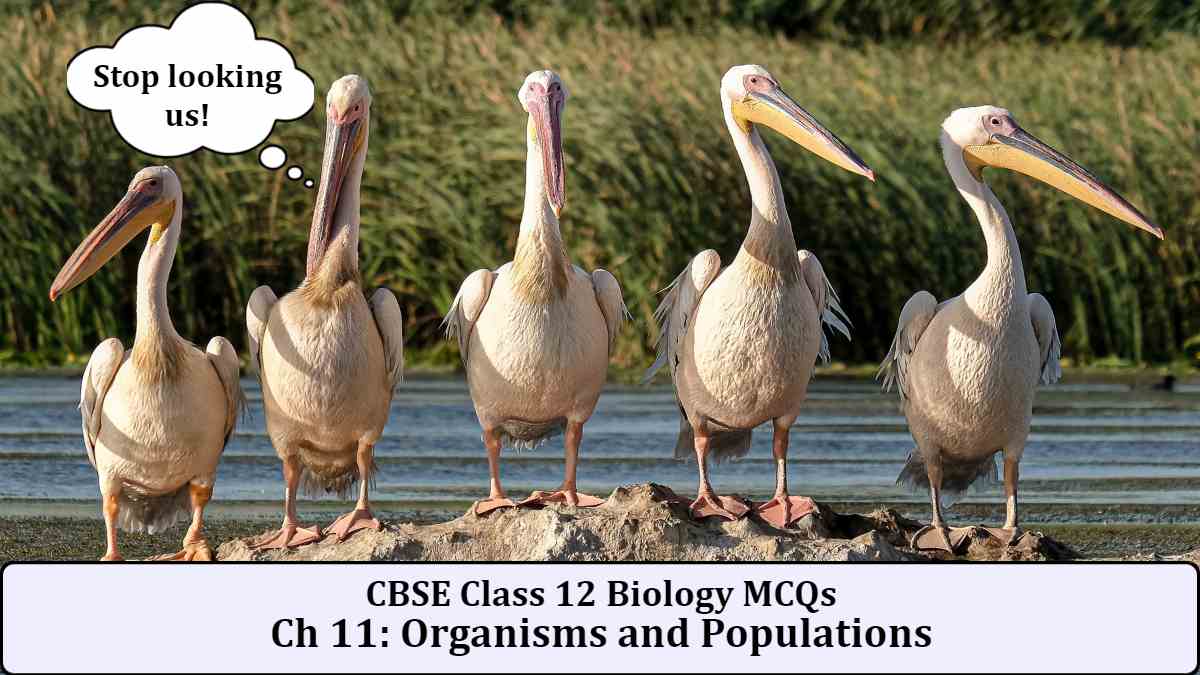Jagran Josh
CBSE Class 12 Organisms and Populations Important MCQs: Practise important MCQs from Chapter 11 Organisms and Populations of Class 12 Biology. These chapter-wise MCQs are important for the upcoming CBSE Class 12 Biology Board Exam 2024.

Download MCQs PDF for CBSE Class 12 Biology Chapter 11 Organisms and Populations
CBSE Class 12 Biology Important MCQs 2024: Biological sciences, or biology, is a complex and demonstration-based field of learning where students learn by practise. One of the best ways to check learning is through assessment. There are various methods of assessment that have been developed to assess students’ growth. For example, project, brainstorming, essay, and assignment methods All these methods are lengthy, time-consuming, and tedious for students as well as teachers. The MCQ method is one of the most effective and time-consuming ones that is used to check the retention and recall abilities of students. MCQs are a part of almost all educational as well as competitive examinations. Thus, their practise is a must.
Here, you will find the top ten MCQs for CBSE Class 12 Biology students from Chapter 11 Organisms and Population. These MCQs are created based on the revised NCERT Class 12 Biology content and thus follow the revised CBSE Class 12 Biology syllabus. Solve these and check your knowledge of organisms and population.
CBSE Class 12 Biology Chapter 11 Organisms and Populations MCQs
1. Which of the following is an example of a density-dependent factor that regulates population growth?
a) Temperature
b) Precipitation
c) Predation
d) Earthquake
2. The maximum number of individuals of a species that an ecosystem can support without being degraded is known as:
a) Carrying capacity
b) Population density
c) Biotic potential
d) Logistic growth
3. The pattern of growth where the population increases rapidly and then stabilises near the carrying capacity is known as:
a) Exponential growth
b) Logistic growth
c) Geometric growth
d) Boom-and-bust cycle
4. Which of the following factors is an abiotic component of an ecosystem?
a) Predators
b) Parasites
c) Soil
d) Herbivores
5. A group of individuals of the same species living in the same area and capable of interbreeding is called:
a) Community
b) Ecosystem
c) Population
d) Habitat
6. Which one is commensalism?
|
Species A |
Species B |
|
|
i |
+ |
0 |
|
ii |
+ |
+ |
|
iii |
0 |
+ |
|
iv |
– |
+ |
a) ii and iv
b) only i
c) i and iii
d) only iii
7. Maximum growth rate occurs in
a) Senescent phase
b) Lag phase
c) Exponential phase
d) Stationary phase
8. Plant species having a wide range of genetical distribution evolve into a local population known as
a) Ecotype
b) Biome
c) Ecosystem
d) Population
9. Geometric representation of age structure is a characteristics of
a) Population
b) Land scape
c) Ecosystem
d) Biotic community
10. The tendency of population to remain in genetic equlibrium may be disturbed by
a) Lack of migration
b) Lack of mutations
c) Lack of random mating
d) Randam mating
Read: CBSE Class 12 Biology All Chapter MCQs
Read: CBSE Class 12 Biology Chapter-wise important notes
Answer Key
1. c) Predation
2. a) Carrying capacity
3. b) Logistic growth
4. c) Soil
5. c) Population
6. c) i and iii
7. c) Exponential phase
8. a) Ecotype
9. a) Population
10. c) Lack of random mating
Also check:
#Important #CBSE #Class #Biology #Chapter #Organisms #Populations #MCQs #PDF

